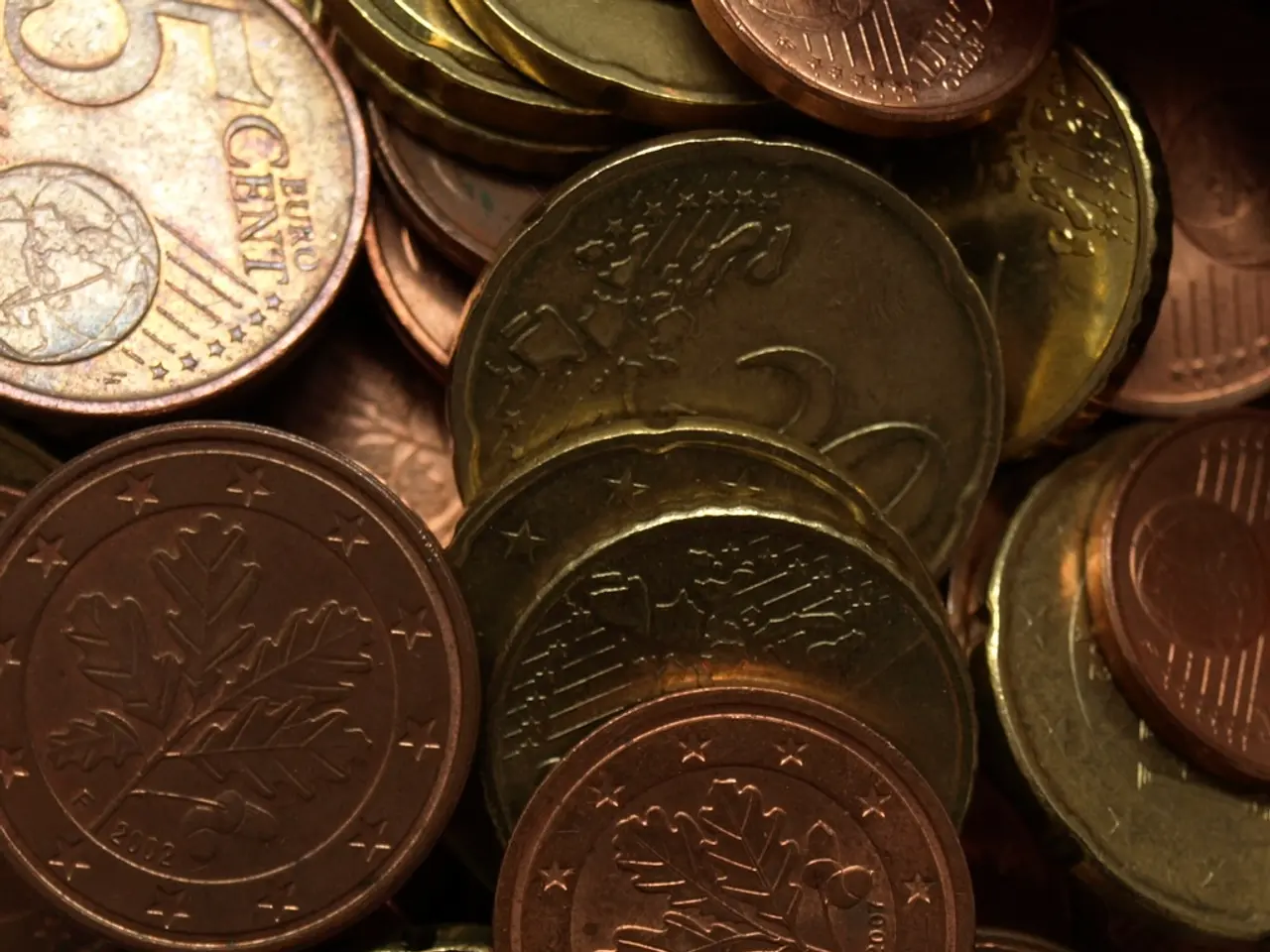Renewable energy stocks regain popularity due to increased investment from Asian and European investors
In a stark contrast to the US market, Asia has witnessed a surge in demand for clean energy stocks and sustainable funds in 2025. Despite challenges in the US administration's Big Beautiful Bill and the reversal of clean energy incentives, Asian investors remain bullish on these investments due to several key factors.
Before its renaming in February 2025, the MSCI World Selection Index was known as the MSCI World ESG Index. Despite challenges for individual stocks, the index has kept pace with the broader market. Meanwhile, the S&P500 index has returned 5% for the same period as the iShares Global Clean Energy ETF (ICLN US), while the Energy Select Sector SPDR ETF (XLE US) has only returned 1.2%. In contrast, the iShares Global Clean Energy ETF has returned impressive 15.6% gains to investors year-to-date as of 27 June 2025.
One of the primary reasons for this trend is the strong regional investments and government support in the Asia-Pacific region. China remains the largest public funder of clean energy in Southeast Asia, with $2.7 billion in investments, focusing on solar, hydropower, and transmission projects as part of its Belt and Road Initiative's green development. Countries like the Philippines and Japan are also introducing landmark policies that integrate energy storage with renewable capacity and promote battery storage technologies through auctions and subsidies.
Another factor contributing to this growth is the robust performance of clean energy stocks and ESG investing in the region. Despite global political headwinds and rhetoric against ESG investing, clean energy stocks in Asia-Pacific are outperforming traditional energy sectors and showing resilience. Sustainable funds in Asian markets, notably South Korea, Taiwan, and Thailand, are seeing continued inflows supported by policy incentives and growing retail demand for ESG-aligned investments.
Rapid innovation and deployment models also play a significant role. Companies such as China’s PCG Power exemplify innovation by delivering ultra-fast deployment of distributed solar and storage projects with digital tools and modular models that enable quicker scaling than traditional approaches. This agility appeals to investors looking for scalable and replicable clean energy solutions in the region.
Asia-Pacific is also becoming a global leader in energy storage capacity, which is critical for supporting renewable energy integration. The market is forecast to contribute nearly 70% of global energy storage investment by 2026, driven by government policies and private sector investment to enhance grid resilience and meet rising electrification demands.
These factors create a favorable investment environment in Asia that contrasts with the more uncertain policy and incentive landscape in the US, sustaining investor interest and demand for clean energy stocks in the region. However, it's important to note that markets turned more cautious in Q1 2025, with sustainable funds reporting outflows of $8.6bn.
Interestingly, China reported marginal inflows to sustainable funds for the first time in Q1 2025, with net capital inflows of RMB1.1 trillion (around USD153.5 billion), marking a historic high and a 104% increase from 2023. Despite the US market's caution, demand for sustainable funds in some Asian markets increased, albeit from a lower base.
The EU also introduced new SFDR rules in Q1 2025, adding another layer of regulation to the global sustainable fund landscape. The IEEFA's research, based on Morningstar data, highlights an interesting pattern of regional divergence in demand for sustainable funds. Global sustainable funds continued to attract strong investor interest in 2024, drawing in $31bn in net inflows.
Lastly, Taiwan's ETF market has seen a significant growth, becoming the third largest in Asia, with sustainable funds reporting consistent inflows for the past two years. This growth underscores the increasing importance of Asia in the global clean energy and sustainable investment landscape.
In conclusion, the combination of strong regional government backing, resilient stock performance, innovative clean energy deployment, and expanding energy storage markets underpin the growing demand from Asian investors for clean energy stocks in 2025 even amid challenges elsewhere.
- In the economic realm of Asia, the surge in clean energy stocks and sustainable funds can be attributed to the region's emphasis on technology, as witnessed in the rapid innovation and deployment models adopted by companies such as China’s PCG Power.
- parallel to the burgeoning technology sector in Asia, the environmental-science domain is also thriving, with China leading the way in Southeast Asia as the largest public funder of clean energy projects, underscoring the significance of science in the region's clean energy agenda.




